Domain 1. AI Governance and Risk
Learning Objectives:
Within this domain, the AI auditor should be able to:
- Evaluate impacts, opportunities, and risk when integrating AI solutions within the audit process.
- Evaluate AI solutions to advise on impact, opportunities, and risk to organization.
- Evaluate the impact of AI solutions on system interactions, environment, and humans.
- Evaluate the role and impact of AI decision-making systems on the organization and stakeholders.
- Evaluate the organization’s AI policies and procedures, including compliance with legal and regulatory requirements.
- Evaluate the monitoring and reporting of metrics (e.g., KPIs, KRIs) specific to AI.
- Evaluate whether the organization has defined ownership of AI-related risk, controls, procedures, decisions, and standards.
- Evaluate the organization’s data governance program specific to AI.
- Evaluate the organization’s privacy program specific to AI.
- Evaluate the organization’s problem and incident management programs specific to AI.
- Evaluate the organization’s change management program specific to AI.
- Evaluate the organization’s configuration management program specific to AI.
- Evaluate the organization’s threat and vulnerability management programs specific to AI.
- Evaluate the organization’s identity and access management program specific to AI.
- Evaluate vendors and supply chain management program specific to AI solutions.
- Evaluate the design and effectiveness of controls specific to AI.
- Evaluate data inputs requirements for AI models (e.g., data appropriateness, bias, and privacy).
- Evaluate system/business requirements for AI solutions to ensure alignment with enterprise architecture.
- Evaluate AI solution life cycle (e.g., design, development, deployment, monitoring, and decommissioning) and inputs/outputs for compliance and risk.
- Evaluate algorithms and models to ensure AI solutions are aligned to business objectives, policies, and procedures.
- Analyze the impact of AI on the workforce to advise stakeholders on how to address AI-related workforce impacts, training, and education.
- Evaluate that awareness programs align to the organization’s AI-related policies and procedures.
Section A. AI Models, Considerations, and Requirements
1. Types of AI
- Generative
- Predictive
- Narrow
- General
2. Machine learning/AI Models
- Basic models
- Neural networks
3. Algorithms
- Classes of Algorithms
- Additional AI Considerations (technical terms and concepts relevant to the IS auditor)
4. AI Lifecycle Overview
- Plan and Design
- Collect and Process Data
- Build and/or Adapt Model(s)
- Test, Evaluate, Verify, and Validate
- Make Available for Use/Deploy
- Operate and Monitor
- Retire/Decommission
5. Business Considerations
- Business Use Cases, Needs, Scope, and Objectives
- Cost-Benefit Analysis
- Return on Investment
- Internal vs. Cloud Hosting
- Vendors
- Shared Responsibility
Section B. AI Governance and Program Management
1. AI Strategy
- Strategies
- Opportunities
- Vision and Mission
- Value Alignment
2. AI-related Roles and Responsibilities
- Categories, Focuses, and Common Examples
3. AI-related Policies and Procedures
4. AI Training and Awareness
- Skills, Knowledge, and Competencies
5. Program metrics
- Examples of Metrics with Objectives and Definitions
Section C. AI Risk Management
1. AI-related Risk Identification
- AI Threat Landscape
- AI Risks
- Challenges for AI Risk Management
2. Risk Assessment
- Risk Assessment
- Risk Appetite and Tolerance
- Risk Mitigation and Prioritization
- Remediation Plans/Best Practices
3. Risk Monitoring
- Continuous Improvement
- Risk and Performance Metrics
Section D. Privacy and Data Governance Programs
1. Data Governance
- Data Classification
- Data Clustering
- Data Licensing
- Data Cleansing and Retention
2. Privacy Considerations
- Data Privacy
- Data Ownership (Governance and Privacy)
3. Privacy Regulatory Considerations
- Data Consent
- Collection, Use, and Disclosure
Section E. Leading Practices, Ethics, Regulations, and Standards for AI
1. Standards, Frameworks, and Regulations Related to AI
- Best Practices
- Industry Standards and Frameworks
- Laws and Regulations
2. Ethical Considerations
- Ethical Use
- Bias and Fairness
- Transparency and Explainability
- Trust and Safety
- IP Considerations
- Human Rights
Domain 2. AI Operations
Learning Objectives:
Within this domain, the AI auditor should be able to:
- Evaluate impacts, opportunities, and risk when integrating AI solutions within the audit process.
- Evaluate AI solutions to advise on impact, opportunities, and risk to organization.
- Evaluate the impact of AI solutions on system interactions, environment, and humans.
- Evaluate the role and impact of AI decision-making systems on the organization and stakeholders.
- Evaluate the organization’s AI policies and procedures, including compliance with legal and regulatory requirements.
- Evaluate the monitoring and reporting of metrics (e.g., KPIs, KRIs) specific to AI.
- Evaluate whether the organization has defined ownership of AI-related risk, controls, procedures, decisions, and standards.
- Evaluate the organization’s data governance program specific to AI.
- Evaluate the organization’s privacy program specific to AI.
- Evaluate the organization’s problem and incident management programs specific to AI.
- Evaluate the organization’s change management program specific to AI.
- Evaluate the organization’s configuration management program specific to AI.
- Evaluate the organization’s threat and vulnerability management programs specific to AI.
- Evaluate the organization’s identity and access management program specific to AI.
- Evaluate vendors and supply chain management program specific to AI solutions.
- Evaluate the design and effectiveness of controls specific to AI.
- Evaluate data inputs requirements for AI models (e.g., data appropriateness, bias, and privacy).
- Evaluate system/business requirements for AI solutions to ensure alignment with enterprise architecture.
- Evaluate AI solution life cycle (e.g., design, development, deployment, monitoring, and decommissioning) and inputs/outputs for compliance and risk.
- Evaluate algorithms and models to ensure AI solutions are aligned to business objectives, policies, and procedures.
- Analyze the impact of AI on workforce to advise stakeholders to address AI-related workforce impacts, training, and education.
- Evaluate that awareness programs align to the organization’s AI-related policies and procedures.
Section A. Data Management Specific to AI
1. Data Collection
- Consent
- Fit for Purpose
- Data Lag
2. Data Classification
3. Data Confidentiality
4. Data Quality
5. Data Balancing
6. Data Scarcity
7. Data Security
- Data Encoding
- Data Access
- Data Secrecy
- Data Replication
- Data Backup
Section B. AI Solution Development Methodologies and Lifecycle
1. AI Solution Development Life Cycle
- Use Case Development
- Design
- Development
- Deployment
- Monitoring and Maintenance
- Decommission
2. Privacy and Security by Design
- Explainability
- Robustness
Section C. Change Management Specific to AI
1. Change Management Considerations
- Data Dependency
- AI Model
- Regulatory and Societal Impact
- Emergency Changes
- Configuration Management
Section D. Supervision of AI Solutions
1. AI Agency
- Logging and Monitoring
- AI Observability
- Human in the Loop (HITL)
- Hallucination
Section E. Testing Techniques for AI Solutions
1. Conventional Software Testing Techniques
- A/B Testing
- Unit and Integration Testing
- Objective Verification
- Code Reviews
- Black Box Testing
2. AI-Specific Testing Techniques
- Model Cards
- Bias Testing
- Adversarial Testing
Section F. Threats and Vulnerabilities Specific to AI
1. Types of AI-related Threats
- Training Data Leakage
- Data Poisoning
- Model Poisoning
- Model Theft
- Prompt Injections
- Model Evasion
- Model Inversion
- Threats for Using Vendor Supplied AI
- AI Solution Disruption
2. Controls for AI-related Threats
- Threat and Vulnerability Identification
- Prompt Templates
- Defensive Distillation
- Regularization
Section G. Incident Response Management Specific to AI
1. Prepare
- Policies, Procedures, and Model Documentation
- Incident Response Team
- Tabletop Exercises
2. Identify and Report
3. Assess
4. Respond
- Containment
- Eradication
- Recovery
5. Post-Incident Review
Domain 3. AI Auditing Tools and Techniques
Learning Objectives:
Within this domain, the AI auditor should be able to:
- Evaluate impacts, opportunities, and risk when integrating AI solutions within the audit process.
- Utilize AI solutions to enhance audit processes, including planning, execution, and reporting.
- Evaluate the monitoring and reporting of metrics (e.g., KPIs, KRIs) specific to AI.
- Evaluate data input requirements for AI models (e.g., data appropriateness, bias, and privacy).
Section A. Audit Planning and Design
1. Identification of AI Assets and Controls
- Inventory Objective and Procedure
- Inventory and Data Gathering Methods
- Documentation
2. Types of AI Controls
- Examples including Control Categories, Controls, and Explanations
3. Audit Use Cases
- Large Language Models
- Audit Process Improvement
- Generative AI
- Audit-Specific AI Applications
4. Internal Training for AI Use
- Key Components for Auditor Knowledge
- Practical Skills Development
Section B. Audit Testing and Sampling Methodologies
1. Designing an AI Audit
- AI Audit Objectives
- Audit Scoping and Resources
2. AI Audit Testing Methodologies
- AI Systems Overall Testing
- Financial Models
3. AI Sampling
- Judgmental sampling
- AI sampling
4. Outcomes of AI testing
- Reduce false positives
- Reduce workforce needs
- Outliers
Section C. Audit Evidence Collection Techniques
1. Data Collection
- Training and Testing Data
- Unstructured and Structured Data Collection
- Extract, Transform, and Load
- Data Manipulation
- Scraping
2. Walkthroughs and interviews
- Design Interview Questions
3. AI Collection Tools
- Using AI to Collect Logs
- AI agents to create outputs
- Voice to Speech
- Optimal Character Recognition
Section D. Audit Data Quality and Data Analytics
1. Data Quality
2. Data Analytics
3. Data Reporting
Section E. AI Audit Outputs and Reports
1. Reports
- Report Types (examples and details)
- Advisory Reports
- Charts and Visualizations
2. Audit Follow-up
3. Quality Assurance and mitigate risk.




